Specialized Turbo Levo
Wheel Size: 29’’ front / 27.5’’ rear
Travel: 150 mm rear / 160 mm front
Geometry Highlights:
- Sizes offered: S1, S2, S3, S4, S5, S6
- Headtube angle: 63° – 65.5° (adjustable)
- Seat tube angle: 76°
- Reach: 477 mm (size S4)
- Chainstay length: 442 mm
Drive System highlights:
- Torque: 90 Nm
- Power: 565 Watts
- Battery: 700 Wh (500 Wh on some models)
- Motor: Turbo 2.2
- Specialized Turbo Control Unit (TCU) / Mastermind TCU
Frame Material: Aluminum and carbon fiber versions available
Price:
- S-Works Frame w/ Fox Float X2 Factory: $8,500
- Complete bikes: $5,800 to $15,000
Blister’s Measured Weight: 49.6 lb / 22.5 kg (Levo Comp Carbon, S4)
Reviewer: Simon Stewart (6′, 170 lb / 183 cm, 77.4 kg)
Test Duration: 6 months
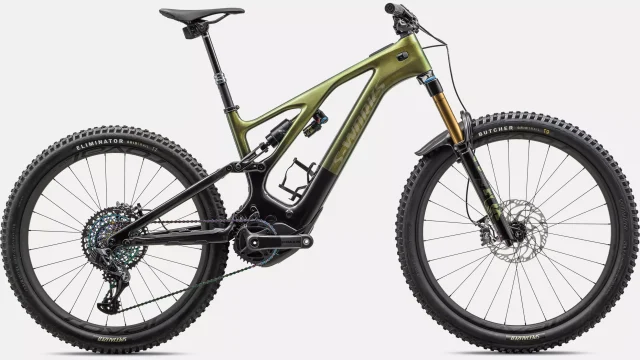
Intro
Specialized was one of the first big companies to go in hard on e-MTBs, and unlike most other brands, took the unusual step of developing their own drive system. That approach allows for a greater degree of integration and affords their bikes a very homogeneous feel. But with increasing competition, we think now is the perfect time to take a look at the current Turbo Levo to see if it’s still one of the best.
The Frame
Available in either aluminum or carbon fiber, the Turbo Levo frame features 150 mm of rear travel and 160 mm up front, and runs a dedicated mixed wheel size configuration. There’s an angle-adjustable headset and flip chips in the Horst pivot to adjust the bottom bracket height ( which also affects chainstay lengths among other things). Specialized claims a progressive shock rate (about 3.1:1 down to 2.4:1 in a pretty straight line) that is very similar to the Stumpjumper EVO. There is a rearward axle path through the first part of travel that then shifts to a forward axle path as you get further into it (as is the case with the vast majority of modern bikes). This, according to Specialized, will keep the wheel from hanging up and will also help harness speed. Once into the travel and the axle path shifts forward, they say it will disconnect from pedaling forces becoming independent to absorb trail features. There are sealed bearings throughout, room for one full-size water bottle, but sadly no SWAT box — since the downtube is filled up by the battery. Specialized notes that the Turbo Levo does have full internal cable routing, but don’t specify if it is internally tubed or not.
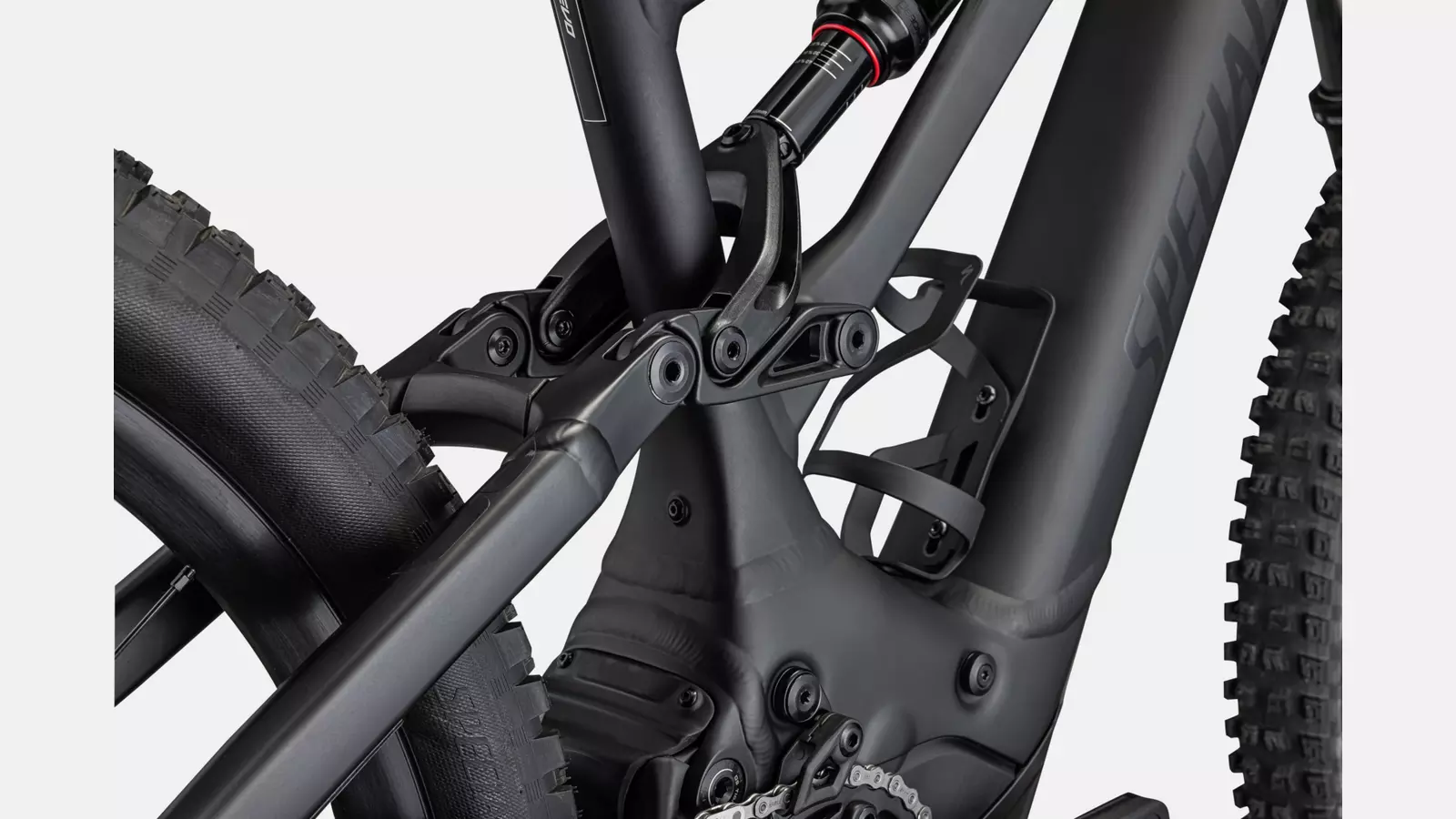
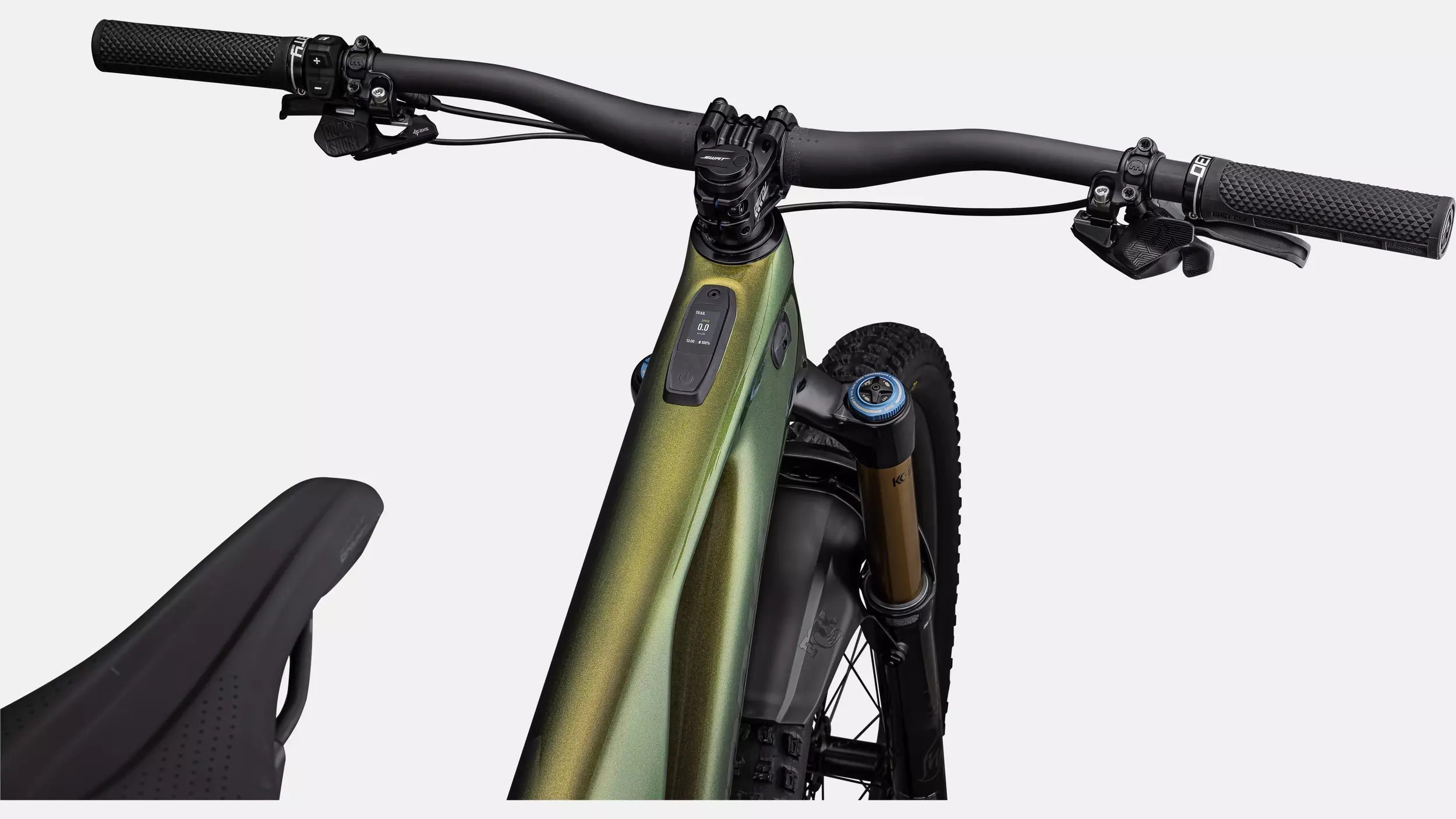
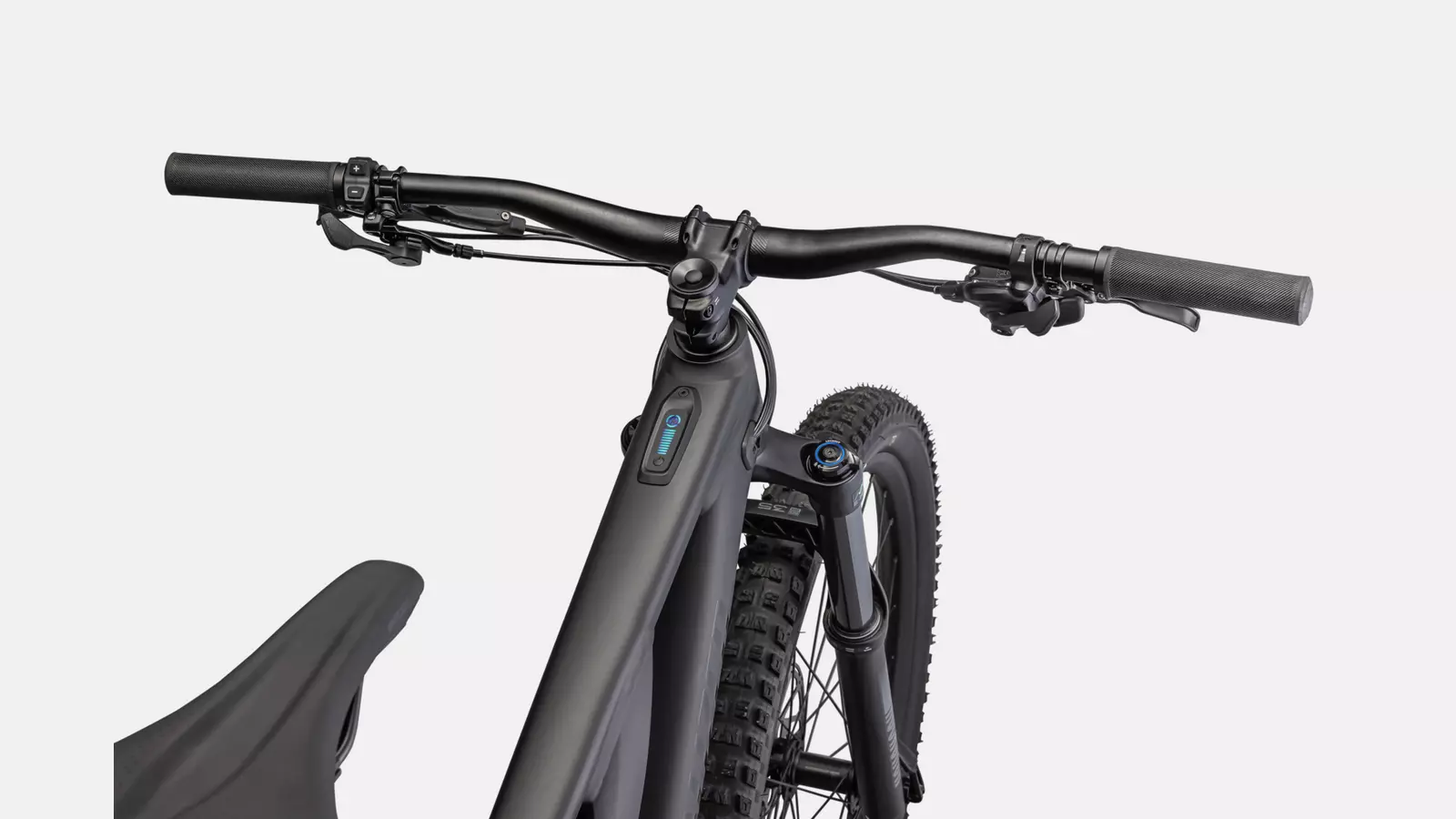
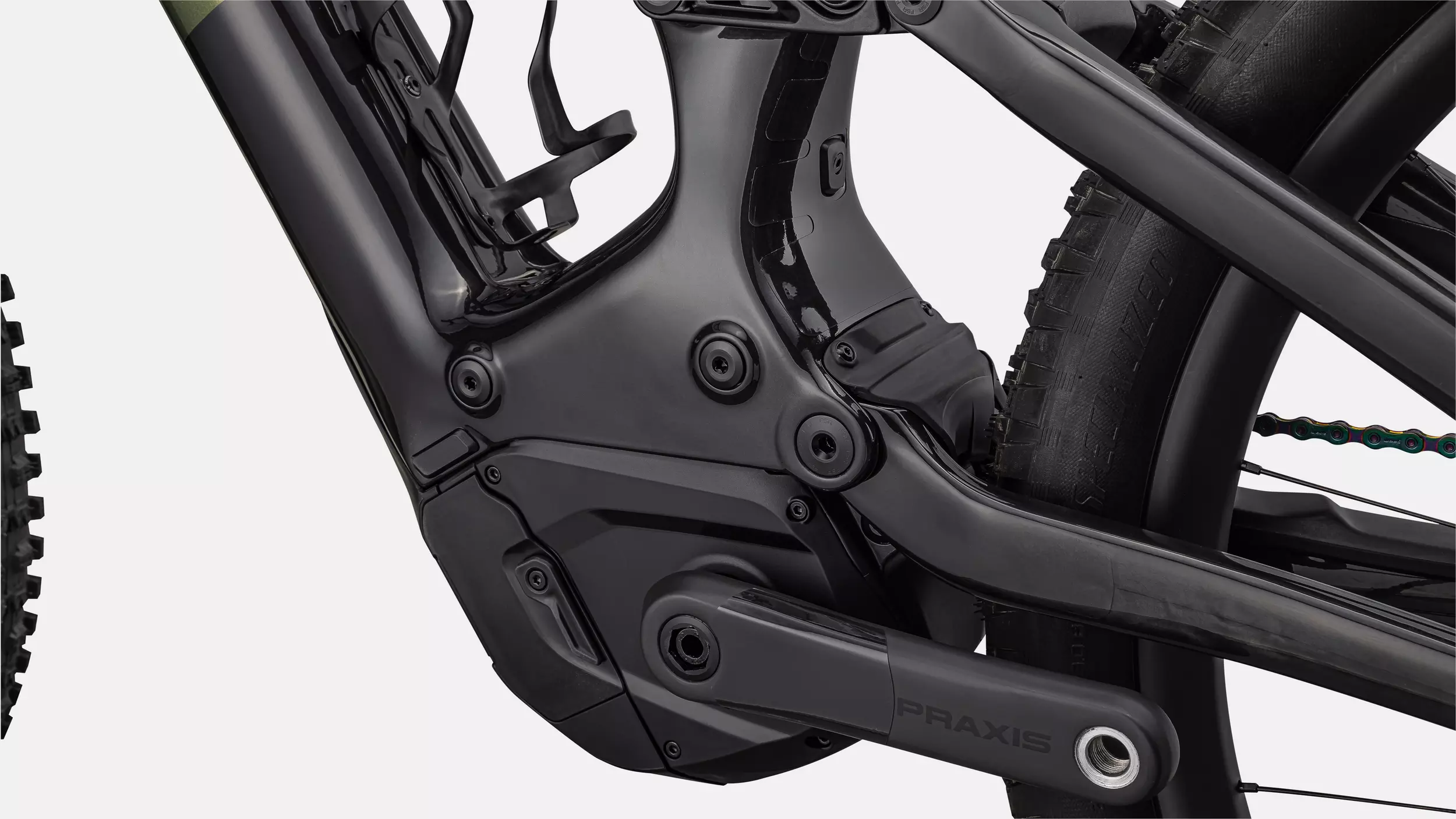
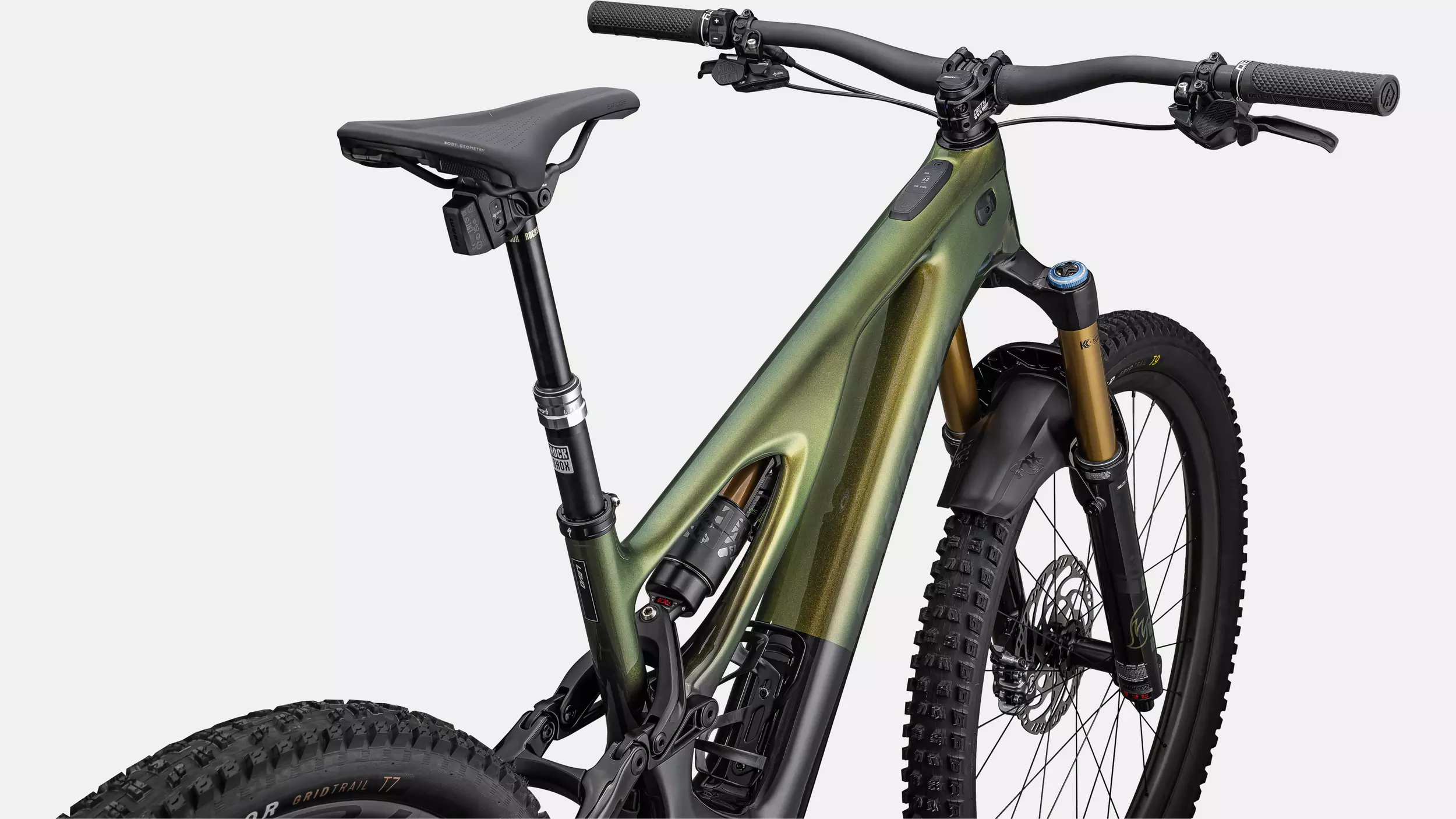
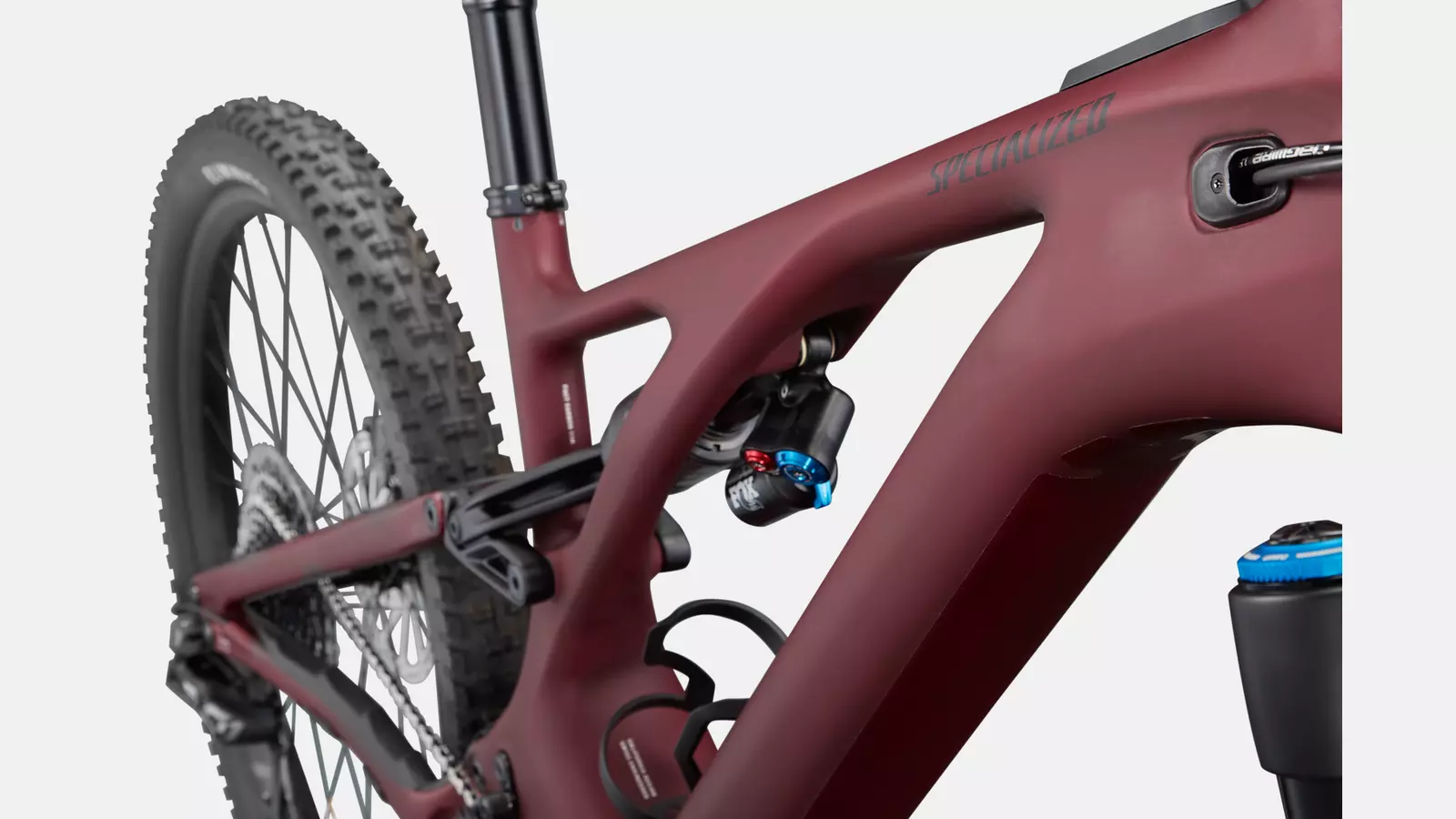
The Drive System
This is where Specialized separates itself from the competition — the entire drive system from the motor to the display is engineered in-house, and it shows. There are no stuck-on pieces, no bodged-together motor covers or battery mounts, and there aren’t wires going in every direction — it just has the appearance of a cohesive ground-up design.
The Turbo 2.2 motor outputs 90 Nm of torque and 565 watts of power. The 90 Nm of torque bests both the Shimano and Bosch motors by 5 Nm, and to put it into perspective, is about what an early 50’s Porsche 356 could muster. The battery is rated at 700 Wh. Batteries in the 700 – 800 Wh range are becoming quite common in this category. The Pivot Shuttle LT we are reviewing currently has a 756 Wh battery, and it will be interesting to run them side by side to see if that 56 Wh gap makes a perceivable difference.
There are two displays offered in the Levo, both of which are integrated into the top tube just a bit behind the headtube. The Specialized TCU (Turbo Control Unit) is paired with builds that feature the smaller 500 Wh battery and has basic information like battery state of charge and assist level. The Mastermind TCU that comes on the higher-spec builds is more fully featured and incorporates such functions as exact battery level percentage, elevation tracking, fully customizable display fields, range, and rider power, with the display protected behind tough Gorilla Glass.
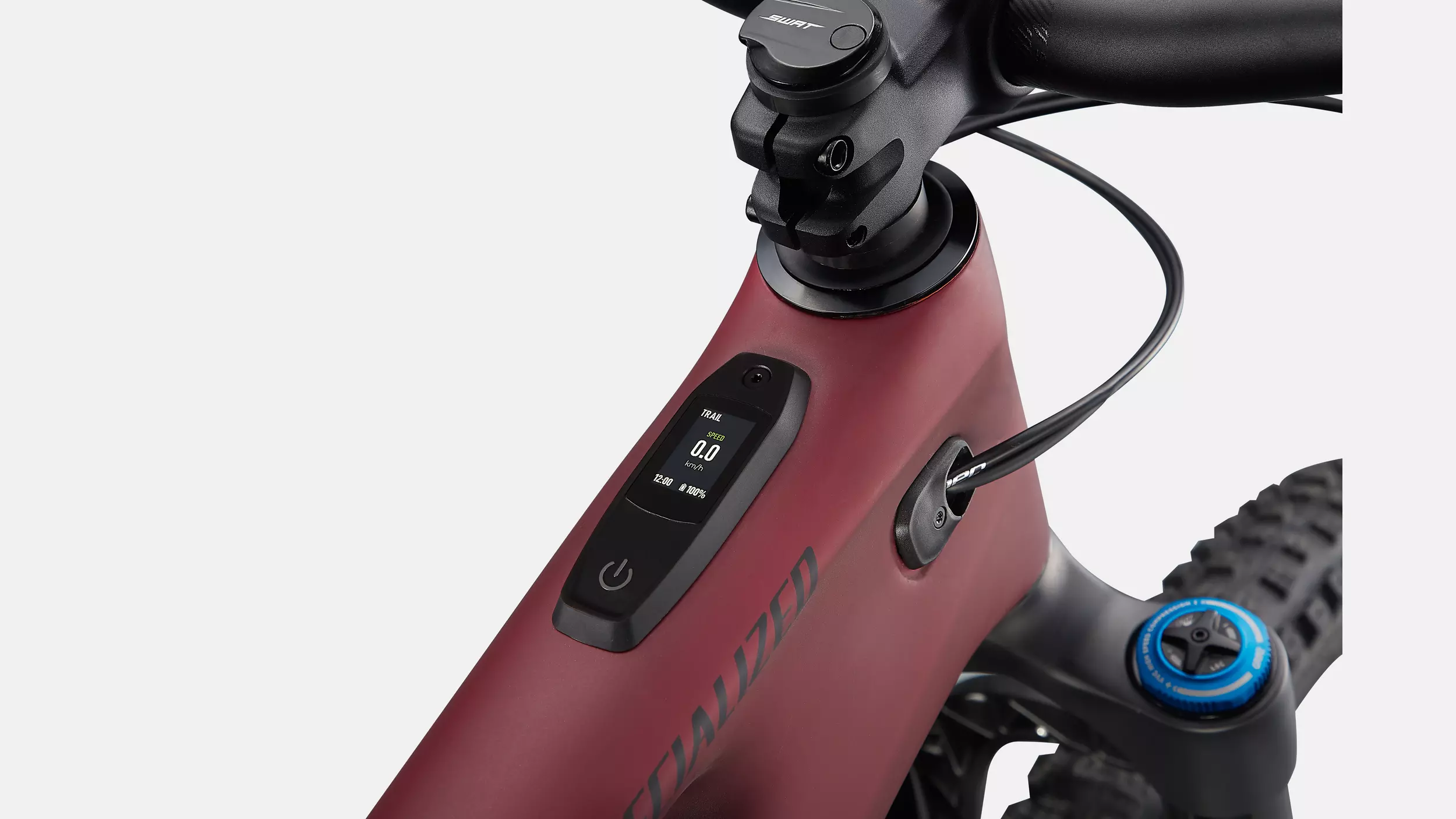
Fit & Geometry
The Levo is offered in S1 – S6 sizing. Specialized’s “S” sizing has been around for a couple of years now, and most are familiar with it. If not, the basic gist is the bike’s head tubes and seat tubes are very close in size across the range with the major change between sizes being the reach. The idea is to not constrain riders into a given size just based on height, and rather give folks the option to choose between a few different sizes based on the ride characteristics that they’re after.
Specialized encourages folks to size up for stability and down for maneuverability. Overall the Levo geometry is very close to the Stumpjumper Evo. For example, the S4 size, which we can roughly correlate to a Large in most brands’ sizing schemes, has a reach of 477mm on the Levo and 475mm on the Stumpjumper Evo. Again, taking cues from the Stumpjumper Evo, the Levo offers an adjustable head tube angle and adjustable bottom bracket height. We think most riders will be able to find their ideal numbers within the six different configurations. For the headtube angle, that range is 63.0º to 65.5º, and the bottom bracket height range is +/- 7mm. Of course, both of these adjustments affect other geometry numbers, so we suggest checking out the Levo Geometry Finder on their site to see how it all comes together.
The Builds
There are lots of options to choose from here, and honestly, it can be a bit confusing. The entry-level Levo Alloy and Levo Carbon share an identical spec, with the only difference being the frame material. It’s important to note though, that hiding in the spec sheet is the fact that these two are the only ones that don’t get the big 700 Wh battery, but instead get a 500 Wh battery and the more basic display. This alone is a pretty compelling reason to step up to the next level — the Turbo Levo Comps (which also share the same spec and are available in either carbon or aluminum).
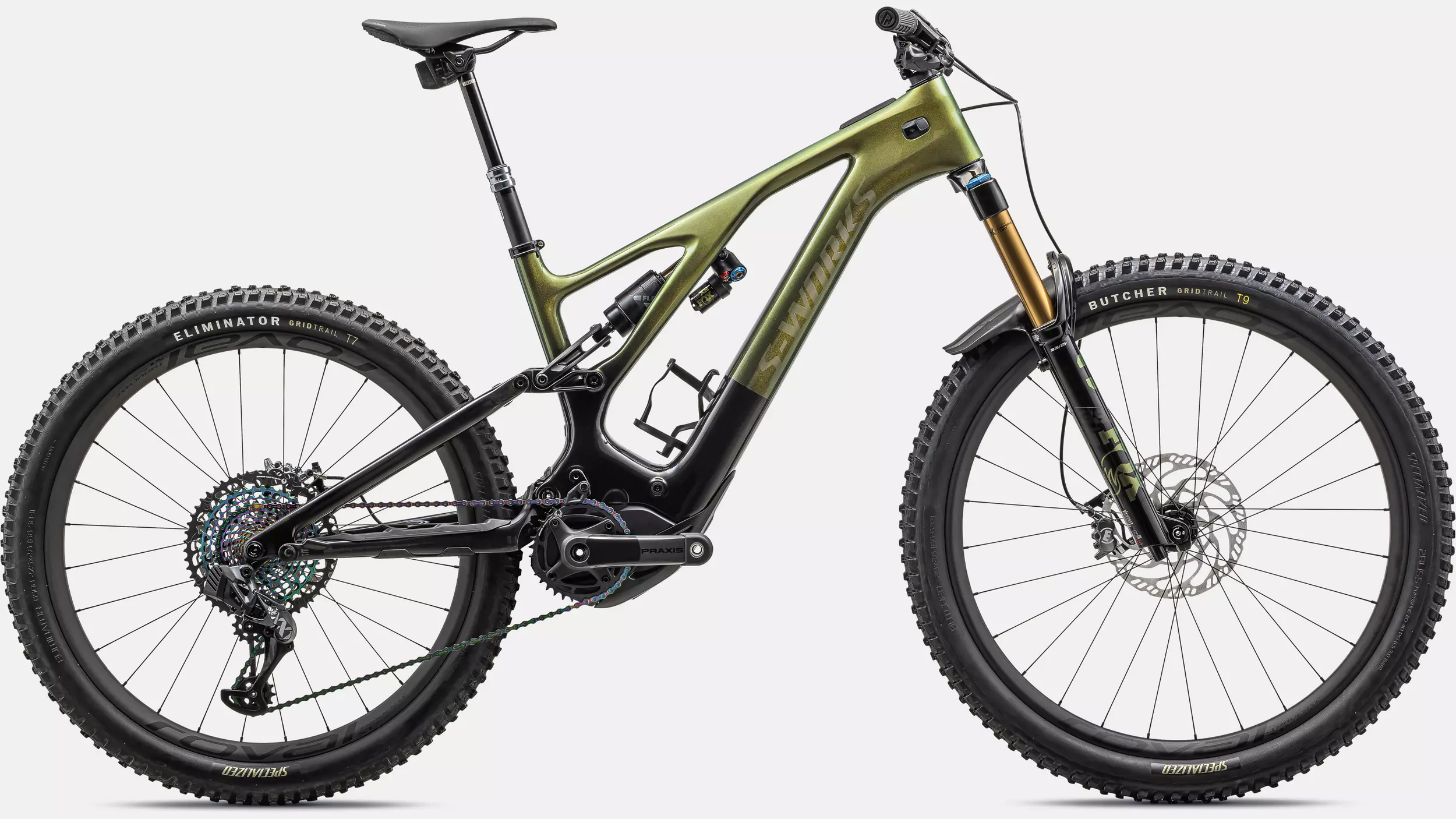
- Drivetrain: SRAM SX/NX Eagle
- Motor: Turbo 2.2
- Battery: 500 Wh
- Brakes: SRAM Guide RE
- Fork: RockShox 35 Silver
- Shock: RockShox Deluxe Select R
- Wheels: Specialized Hubs/ Specialized alloy rims 29mm inner width
- Dropper Post: TranzX dropper (S1: 100mm; S2: 125mm; S3: 150mm; S4-S5: 170mm; S6: 200mm)
- Drivetrain: SRAM SX/NX Eagle
- Motor: Turbo 2.2
- Battery: 500 Wh
- Brakes: SRAM Guide RE
- Fork: RockShox 35 Silver
- Shock: RockShox Deluxe Select R
- Wheels: Specialized Hubs/ Specialized alloy rims with 29mm inner width
- Dropper Post: TranzX dropper (S1: 100mm; S2: 125mm; S3: 150mm; S4-S5: 170mm; S6: 200mm)
- Drivetrain: SRAM GX Eagle
- Motor: Turbo 2.2
- Battery: 700 Wh
- Brakes: SRAM Code R
- Fork: Fox Rhythm 36, (S1: 150mm travel; S2-S6: 160mm travel)
- Shock: Fox DPS (S1); Fox Float X Performance (S2–S6)
- Wheels: Specialized Hubs/Specialized alloy rims with 30mm inner width
- Dropper Post: X-Fusion Manic (S1: 100mm, S2: 125mm, S3: 150mm, S4/S5: 175mm, S6: 190mm)
- Drivetrain: SRAM GX Eagle
- Motor: Turbo 2.2
Battery: 700 Wh - Brakes: SRAM Code R
- Fork: Fox Rhythm 36, (S1: 150mm travel; S2-S6: 160mm travel)
- Shock: Fox DPS (S1); Fox Float X Performance (S2–S6)
- Wheels: Specialized Hubs/Specialized alloy rims with 30mm inner width
- Dropper Post: X-Fusion Manic (S1: 100mm, S2: 125mm, S3: 150mm, S4/S5: 175mm, S6: 190mm)
- Drivetrain: SRAM XO Eagle
- Motor: Turbo 2.2
- Battery: 700 Wh
- Brakes: SRAM Code RS
- Fork: Fox Float 38 Performance Elite
- Shock: Fox DPS (S1); Fox Float X2 Performance Elite (S2–S6)
- Wheels: Specialized Traverse
- Dropper Post: X-Fusion Manic (S1: 100mm, S2: 125mm, S3: 150mm, S4/S5: 175mm, S6: 190mm)
- Drivetrain: SRAM XO Eagle
- Motor: Turbo 2.2
- Battery: 700 Wh
- Brakes: SRAM Code RSC
- Fork: Fox Float 38 Factory
- Shock: Fox Float X2 Factory
- Wheels: Specialized Traverse Carbon
- Dropper Post: Fox Transfer Factory (S1: 100mm, S2: 125mm, S3: 150mm, S4/S5: 175mm, S6: 200mm)
- Drivetrain: SRAM XX1 Eagle AXS
- Motor: Turbo 2.2
- Battery: 700 Wh
- Brakes: Magura MT7
- Fork: Fox Float 38 Factory
- Shock: Fox Float X2 Factory
- Wheels: Specialized Traverse SL Carbon
- Dropper Post: RockShox Reverb AXS (S1:100mm, S2: 125mm, S3: 150mm, S4-S6: 170mm)
Some Questions / Things We’re Curious About
(1) Power delivery and range are always a question with e-bikes, and the Levo is no different. With many different drive/battery systems on the market, how does the proprietary Specialized system compare?
(2) We picked the Levo Comp Carbon as our pick of the litter, but it doesn’t get the Fox 38 up front. Is the Fox 36 up to the task, or will it leave us wishing we had the Levo Expert?
(3) How does the mixed-wheel size design get along with a bike with a motor?
Flash Review
Blister Members can read our Flash Review of the Turbo Levo for our initial on-trail impressions. Become a Blister Member now to check out this and all of our Flash Reviews, plus get exclusive deals and discounts on gear, and personalized gear recommendations from us.
FULL REVIEW
The versatility and adjustability of the Specialized Turbo Levo have given us a lot to dissect in its performance, and we’ve put a ton of miles on it to do so. It’s also been a really fun bike, so piling on the miles hasn’t exactly been a chore. There’s a lot to go over on one of the more popular eMTBs on the market, so let’s dig in.
Fit & Sizing
Simon Stewart (6’, 170 lbs / 183 cm, 77 kg): I consistently land on size S4 bikes across the board for Specialized, and the Levo is no exception. I started in the middle headset, high bottom bracket setting, which produces a 477 mm reach, but I ended up preferring the slacker head angle in the low BB setting, which brought the reach down very fractionally to 475 mm. Both settings landed the reach in my sweet spot, and honestly, the 2 mm difference was hardly noticeable. Eventually, I switched it back to the high BB setting (more on why below), but then also switched the headset to the slack position — this put the reach back to 477 mm and brought the head angle back down to 64º, but more importantly, it raised the bottom bracket. I mentioned in the Flash review that I put all the spacers under the stem to get the handlebars where I like them, that turned out to be fine, and I didn’t feel the need to swap in a higher-rise handlebar, though I wouldn’t mind seeing a taller stack height to give a bit more wiggle room on that front.
The S4 build comes with a 175 mm X-Fusion Manic dropper post, and while the post impressed me and performed flawlessly, I would swap it out for one with more travel. Due to the motor placement, the Levo has a reduced maximum post insertion depth, so spec’ing a 175 mm post makes sense — and is also the reason I highly recommend referencing the user manual, which lists maximum post insertion measurements for each size, before purchasing a longer travel replacement. I use the OneUp components dropper post length calculator anytime I’m swapping posts, which has a nice database of many of the more popular options out there and helps compare fit for a given frame.
Climbing
At first, I was a bit disappointed by the Levo’s climbing performance — primarily because the 27.5’’ rear wheel required a touch of finesse to maintain traction on steep, loose, ledgy terrain. In addition, the motor seemed to get bogged down (in comparison to the Bosch and Shimano motors) on that same steep terrain. Now, I’ve mentioned in other eMTB reviews that one of my favorite things to do is to seek out ridiculously steep technical climbs — ones that would be impossible on non-motorized bikes — so these shortcomings were definitely concerning.
But by digging into Specialized’s Mission Control app, I was able to customize the power characteristics of the motor to better suit climbing the weird steep stuff. This was done by turning up the Shuttle and Acceleration Response modes, which are tuneable assist parameters accessed inside the Mission Control app. By turning the percentages of both of these settings up, the motor is less dependent on rider power input in order to get full power out of it, and it also responds faster to that pedal input. This definitely helped it to not get bogged down and made it feel more on par, or slightly stronger than the Bosch and Shimano motors.

Now, to be clear, those settings tweaks don’t unlock additional torque. The actual output (90 Nm) is still the same, but it makes it easier to keep the motor higher in its output range when clawing up the extra steep and techy stuff. I wouldn’t recommend this setting for everyday riding as it makes the power delivery more abrupt and challenging to manage. Unfortunately, tuning the Shuttle and Acceleration Response affects all three riding modes (Eco, Trail, and Turbo) equally — you’re not able to tune them individually. If that wasn’t the case, I would customize the Turbo mode just for climbing this type of terrain, so I could quickly toggle in and out of it when needed. With that said, there is another handy feature called Micro Tune that’s very helpful when running with all the parameters turned up to the max. Pressing and holding the plus button on the remote activates the Micro Tune mode, which then allows you to adjust the power in 10% increments from the remote. Here’s an example of how I would use it: I could climb a steep rock slab while utilizing all the power, then while transitioning off the rock onto loose conditions, I would simultaneously toggle the power down to 90 or 80% to improve traction and manageability. Overall, the user experience connecting and tuning with the Mission Control app is superb, and there’s a great deal of flexibility to dial in the drive system performance to your needs and preferences.
The more I got used to the power delivery, the rear-end traction became less of an issue, though it still wasn’t quite as good as the other full-power 29er eMTBs in the test fleet. I generally like mixed wheel sizes for eMTBs for handling reasons, but climbing traction is one area where they are at a slight disadvantage. With the shorter rear center afforded by the mixed wheel configuration, the Levo earned my praise for its ability to get the front end up and over ledges. However, in the low BB setting, I would sometimes bang the motor on those same ledges. This prompted me to play with the geometry again. I found I liked the 64º head angle resulting from the low BB setting and middle head angle setting, but at the same time was looking for a few more millimeters of clearance under the motor. By switching to the slack head angle position, and moving to the high BB setting, the head angle stayed at 64º, but the bottom bracket was raised by 5 mm — exactly what I was looking for. This made a whole lot more difference than the seemingly small change would suggest, as both motor and crank strikes were significantly reduced.
Descending
I found the Levo to be a competent descender, and the ability to tune the geometry to suit a particular riding style helps strengthen its performance. Running the Levo in the slack head angle position and low BB setting drops the head angle down to 63.5º, which gives it more high-speed stability, but at higher speeds also exposes the limits of the Levo Comp’s suspension. If mobbing steep chunky descents at race pace is a priority, then I’d recommend stepping up to the Expert build, which upgrades the fork from a Fox 36 Rhythm, to a Fox 38 Performance Elite, and the shock from a Fox Float X Performance, to a Fox X2 Performance.

Dialing back the geometry to the slack head angle position and high BB setting — the one I favored for climbing — put the handling more in tune with the suspension performance, and gave the Levo a more balanced feel. The other setting competing for my top spot was the middle head angle position and low BB setting. Like I mentioned in the climbing section, both of these settings put the head angle at 64º, with the difference being BB height. The lower BB in this configuration did have an appreciable effect on cornering, and cornering is one the attributes I like most about the Levo’s handling, so making it a tick better in this setting made it even more fun. If I lived in an area that was less rocky, this would be the setting I would run — since the terrain I ride is extremely rocky, I ultimately settled on the setting with the 64º head angle with more BB clearance. The cornering difference between the two was small, but still noticeable, and in the end having the increased clearance was more beneficial in my area.
The Levo is a good climber and a good descender, but not exceptional at either — where I think it does its best work is on more cross-country style undulating terrain. It’s here where the mixed wheels shine, giving it balanced handling that feels intuitive and rewarding. The way the mulleted back end easily steps out in corners is wickedly fun, and overall, it encourages a playful riding style. The suspension that got a little in over its head descending, stays in its comfort zone. The Levo has turned out to be one of the more fun eMTBs I’ve ridden for trails in this category.
The Build
The build on our Levo Comp Carbon has been pretty solid, though there were a couple of issues that we’ll get into below. One of the standout points has been the tires — the Specialized Butcher T9 2.6’’ front and the Eliminator T7 2.6’’ in back impressed me as excellent all-around tires, and held up incredibly well to the abuse handed down by over 600 miles of high-speed chunk, and steep blown out moto trails. Yes, they’re in need of replacement now, but they sure put up a strong showing. Also, I need to call out the X-Fusion Manic seatpost, as it has consistently out-performed many of the other more expensive posts, notably the Fox Transfer, we have on our other review bikes — it hasn’t gotten sticky, has good return speed, and seems to be unfazed by colder temps.

With the number of miles we’ve put on the Levo, it’s definitely within reason to have gone through some wear items, like brake pads and tires. Non-wear items that didn’t fair so well were the rear rim and the non-drive side crank arm. The Praxis crank arm bent on what I thought was a very benign rock strike, badly enough to warrant replacement. Thankfully it was fairly inexpensive, but I do wonder about it happening again given how easily the first bent. The Specialized rim didn’t take what I again thought was a benign impact very well, resulting in just enough rim damage to cause sealing problems, though I was able to bend it back into shape. I’m a fan of tire inserts, especially for eMTBs, and can say that the rim damage most likely would not have happened had I been running inserts (I did put one in after repairing the rim). I would like to see more factory-spec’d inserts on full-power eMTBs — the weight penalty is mostly negligible due to the weight of the bike itself and the fact that you’ve got a motor, both of which also make big rim strikes and damage more likely.
Drive System and Range
Here is an area where the Levo excels. Specialized engineers in the entire system in-house and the impressive level of integration is immediately apparent. The motor and charging port fit seamlessly into the frame, and the battery is removable with the removal of just one fastener. The display, which I’ll get deeper into below, is one of the best I’ve used, and so is the Specialized Mission Control App used to customize it. The only thing, and I’m digging here, that I see that could be improved would be to make the handlebar remote wireless.
I find the Specialized-designed motor to be every bit as good as the motors from Bosch, Shimano, and Rocky Mountain. It strikes an impressive balance of smoothness, power, and quietness. Of course, they all have their strong and weak points, and I would prefer a little more run-on (the distance the motor continues to run after you stop pedaling) from the Specialized motor — one of the strong points of the Bosch motor. Actually, I would love run-on to be a tuneable feature in the app. Another added bonus is the fact that Specialized has an extensive dealer network should your drive system need servicing or warranty work.
The Mastermind TCU top tube display, which I custom-configured via the Mission Control app, is one of the better top tube displays on the market. I have one of the screens set up to show rider power, motor power, and total power — it’s been fun watching it peak at over 1000 watts of combined power. The display has a barometric altimeter and can show current altitude as well as track elevation gain per ride (up to 9,999 ft). Living at high elevation, these are features I appreciate, though I wish it could keep a record of cumulative elevation gain, which would be cool to see in combination with the odometer, but unfortunately, it can’t.
The range has been good, and the 700 Wh battery offers plenty of capacity without being overly heavy. When compared to the Orbea Wild, which has the Bosch 750 Wh battery, and with both bikes on full power mode for the duration of the ride, the Levo typically finishes with about 10% less power remaining — which makes sense given that it has a smaller battery. Still, I wouldn’t hesitate grabbing the Levo when doing long rides with other riders on eMTBs with bigger batteries, because being strategic with the power modes is a fun component of eMTB riding.

Bottom Line
The Specialized Turbo Levo is a very good, well-rounded eMTB — which is just what we expected from it. What came as a bit of a surprise is just how versatile it is: with the six different geometry configurations it can wear a lot of different hats, and adapt to a wide ranger of rider preferences. I have to admit that at first I considered the Levo’s adjustability to be a bit too much — then after experimenting in all the different positions, I began to see real value in what Specialized has done. Combine this versatility with top-notch integration, an excellent app, and a fun-loving character, the Levo still deserves its place as one of the all-rounder full-power eMTBs to beat.
Deep Dive Comparisons
BLISTER+ members and those who purchase our Digital Access Pass can check out our Deep Dive comparisons linked below. Get our Digital Access Pass to view all our Deep Dives and Flash Reviews, or become a BLISTER+ member today to get access to that and a LOT more, including the best worldwide Outdoor Injury Insurance, exclusive deals and discounts on skis, personalized gear recommendations from us, and much more.
Check out our Deep Dive comparisons of the Specialized Turbo Levo to see how it compares to the Pivot Shuttle LT, Pivot Shuttle AM, Orbea Wild, and Rocky Mountain Instinct Powerplay.

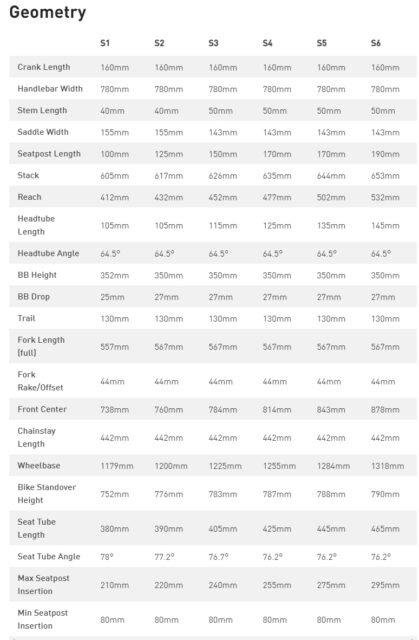
Nice to see you guys finally reviewing eMTBs.
Thanks for the comprehensive review. I too appreciate Specialized’s integration and adaptability via the app.
Could you maybe please talk a little more about mixed 29/27.5 v 29/29 wheel sets?
I got that you feel 29 rear grips a little better for more traction on loose climbs.
– I was hoping for a cornering (tight woods / flat corners) manoeuvrability comparison
– as I understand it 275 rear is said to turn in better (initiate turns easier) and, as the rear wheel follows (tracks) the front better, to improve flat cornering. Also to get speed easier off trail undulations by pumping better.
What’s your take please Simon?. I’m using 29/275 wheels on a Kenevo SL. Hence the question.
Thanks